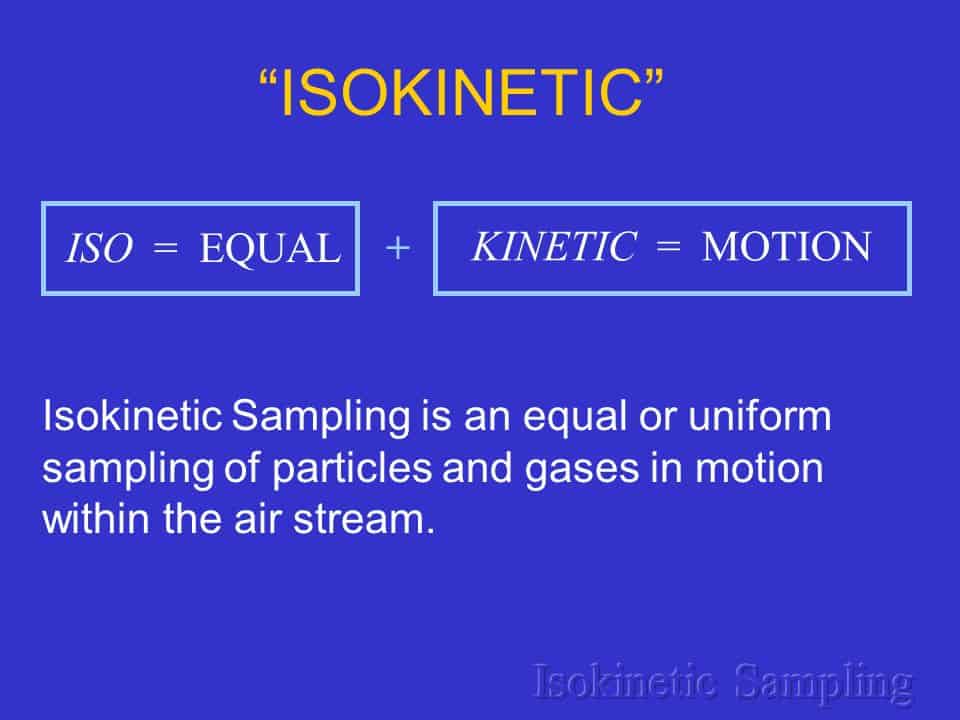





Isokinetic sampling is a widely used method for stack emission testing, designed to collect representative samples of particulate matter (dust) and gases from the stack. It ensures that the velocity of the sampled gas is the same as the stack gas velocity, minimizing bias in the collected data. Here’s a detailed explanation of the isokinetic sampling method, including the formulas used:
Principle of Isokinetic Sampling: The principle of isokinetic sampling is based on the Venturi effect, which states that when the velocity of a fluid increases, its pressure decreases. Isokinetic sampling aims to achieve the same velocity in the sampling nozzle as the stack gas velocity, allowing the particulate matter and gases to enter the nozzle without any bias or distortion.
Step-by-Step Procedure for Isokinetic Sampling:
Step 1: Determine Sampling Point: Select the sampling point on the stack, ensuring that it meets the required isokinetic conditions. The ideal location is usually at least seven stack diameters downstream and two diameters upstream from any obstructions that could disturb the gas flow.
Step 2: Calibrate Sampling Equipment: Calibrate the sampling equipment before use. This includes calibrating the flow measurement device, such as a pitot tube or a critical orifice, which measures the stack gas velocity. The flow measurement device must be properly sized to match the stack gas velocity range.
Step 3: Set Sampling Flow Rate: Set the sampling flow rate to match the stack gas velocity using the calibrated flow measurement device. This is typically done by adjusting the flow control valve on the sampling probe or isokinetic sampling train.
Step 4: Collect Samples: Run the sampling equipment at the isokinetic flow rate and collect particulate matter and gas samples over a predetermined period. The duration of the sampling period depends on the required accuracy and precision of the data but is typically around 1 hour.
Step 5: Measure Sample Volume and Dust Weight: Measure the volume of gas collected during the sampling period using a gas meter. Also, collect the filter paper or impingers used to collect particulate matter and weigh them before and after sampling to determine the weight of the dust collected.
Step 6: Calculate Dust Concentration: The dust concentration (C) in the stack gas is calculated using the following formula:
C=Sample Volume (m³)Dust Weight (mg)×106
Step 7: Apply Correction Factors (if necessary): To correct for any deviations from true isokinetic conditions, apply appropriate correction factors like the isokinetic constant (k) or the bias correction factor (BCF) depending on the type of sampler used.
Step 8: Interpret and Report Results: Interpret the data, apply any necessary corrections, and report the dust concentration results along with relevant information about the sampling conditions, sampling location, and calibration.
Advantages of Isokinetic Sampling:
Limitations of Isokinetic Sampling:
Isokinetic sampling is an essential method for stack emission testing, especially for compliance monitoring and air quality assessments. It ensures the accuracy and reliability of data, aiding industries in managing their environmental impact and adhering to environmental regulations.




